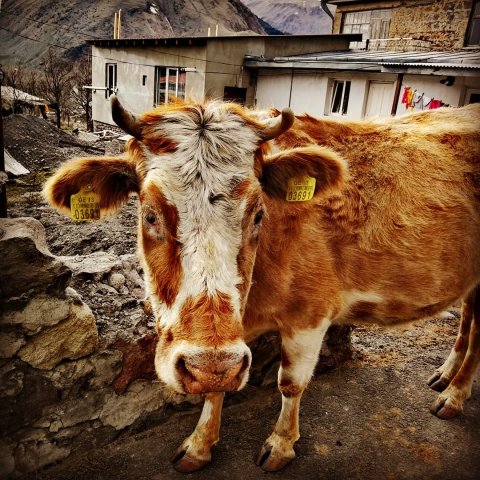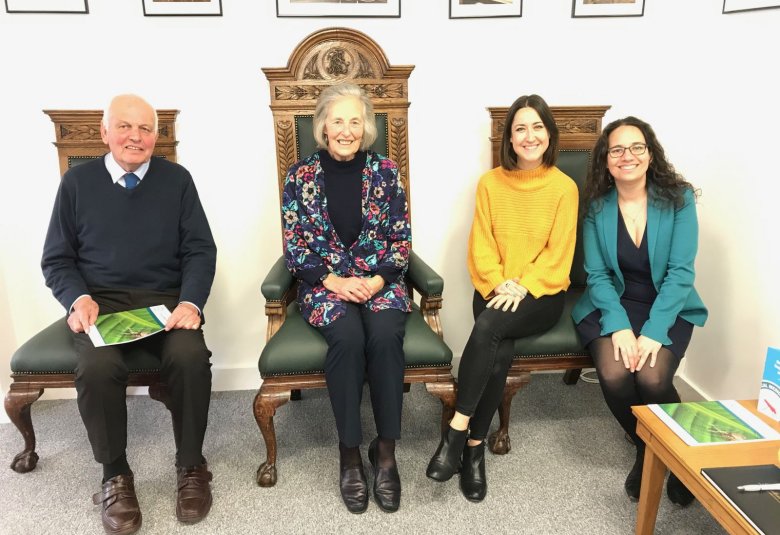Time #forNature - Biodiversity and One Health in Tropical Medicine

As a veterinarian I have always been fascinated by the endless variations and diversity of species that exist in the natural world. Nature makes fascinating adaptations to allow each species to occupy its niche…
Why do cows have four stomachs? To allow them to breakdown grass - an otherwise difficult to digest but abundant food! Why do giraffes have such long necks? To allow them to reach nutrient rich foods at the top of trees without competition!
As charming as these examples are for a children’s ecology lesson, the value of biodiversity has been long overlooked by society. In a world often measured by economics, the value of biodiversity is a difficult thing to measure. In the most basic terms, the natural world is what feeds us, shelters us and heals us.
Medicine from nature

Across the world, countless lives have been saved and improved by medicines derived from the natural world. These natural compounds - often too complex to have been easily discovered in a laboratory – have led to huge impact in both public and veterinary health. The most famous example must be Alexander Fleming’s discovery of penicillin in 1928, - the first antibiotic, from a fungal mould found growing on a dirty laboratory plate.
Since then, discoveries of other life-saving drugs from plants, microbes and animals have been made:
- Aspirin, from the bark of Spiraea plants, was used by the ancient Egyptians for aches and pains. Often described as a wonder drug, the use of aspirin for many conditions, including preventing heart disease and cancer, continues to be researched today.
- Streptomycin – an antibiotic commonly used in both human and veterinary medicine was developed in 1944 from a type of bacteria found in soil and proved highly effective against tuberculosis.
- Quinine, derived from the bark of the cinchona tree, has been used as an antimalarial agent from as early as the 17th century and given rise to other modern antimalarial treatments.
- Analgesics inspired by the Ecuadorian poison dart frog, which delivers any predators a deadly toxin from its skin, offer several hundred times more potent pain relief than morphine.
- Pyrethroid insecticides, developed from pyrethrum flowers, have been widely used on bednets to reduce vector exposure and in animals to kill ticks and fleas.
The most diverse organisms on the planet are microbes but it is estimated a mere 5% have been investigated to date. Exploring this diversity may be crucial for new drug discovery and in overcoming the increasing challenge of resistance to antibacterial and anthelmintic drugs that is threatening our ability to treat many conditions.
Genetic biodiversity
The next frontier in medicine from the natural world will likely be in genetics. Recent leaps in our ability to examine the genetic code of species has identified many more variants than were ever suspected. Hidden within this vast genetic biodiversity are surely genes with the potential to heal or resist disease.
At the same time, as searching for exciting new genetic opportunities, it is worth remembering that of the genes we know, we share almost all with the humble mouse. Mice, along with other small mammals, have allowed safety and efficacy testing of numerous essential medicines and chemicals. They have also allowed us to understand hereditary disease better, with the genes for hereditary deafness being discovered in the last 20 years.
One Health

Although many medicines or chemicals are originally derived from the natural world, we should always consider what impact their use could have, as well as the impact of extraction, on local culture, livelihoods and ecosystems. The One Health approach recognises the need to work across sectors, with human, animal and environmental health considered together.
For example, the use of ‘naturally derived’ insecticides to control vectors may be beneficial for human or livestock disease control but could also impact pollinating insects vital to supporting food production. In the case of schistosomiasis, controlling the intermediate snail host might seem beneficial but we must also consider knock-on effects to the environment and other species in the ecosystem. One Health also goes further, able to account for the wider benefits of nature to wellbeing, local culture and livelihoods.
After deriving so many critical and life-saving health benefits from biodiversity and nature, now is the time to start repaying the favour and protecting our environment.




